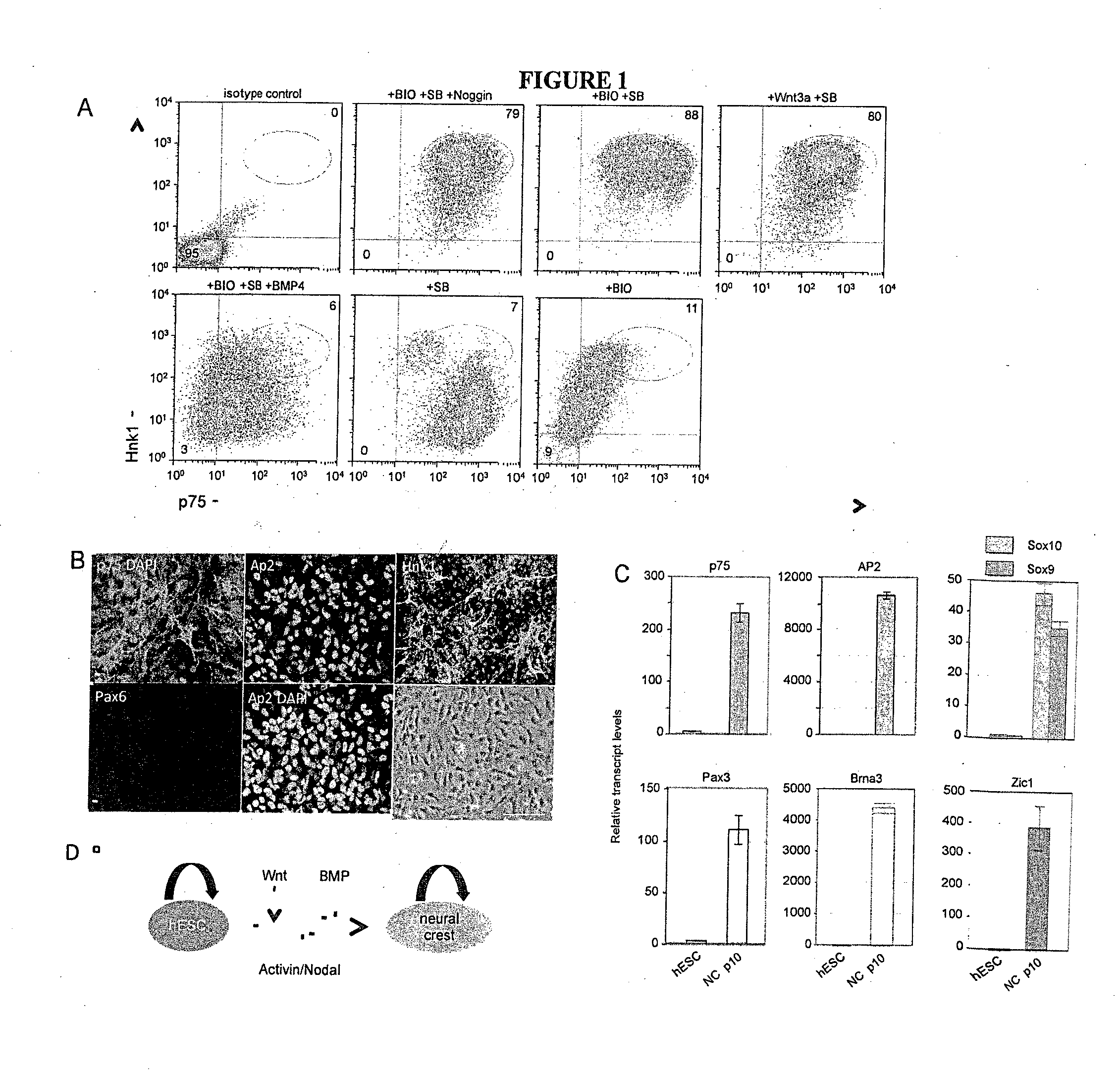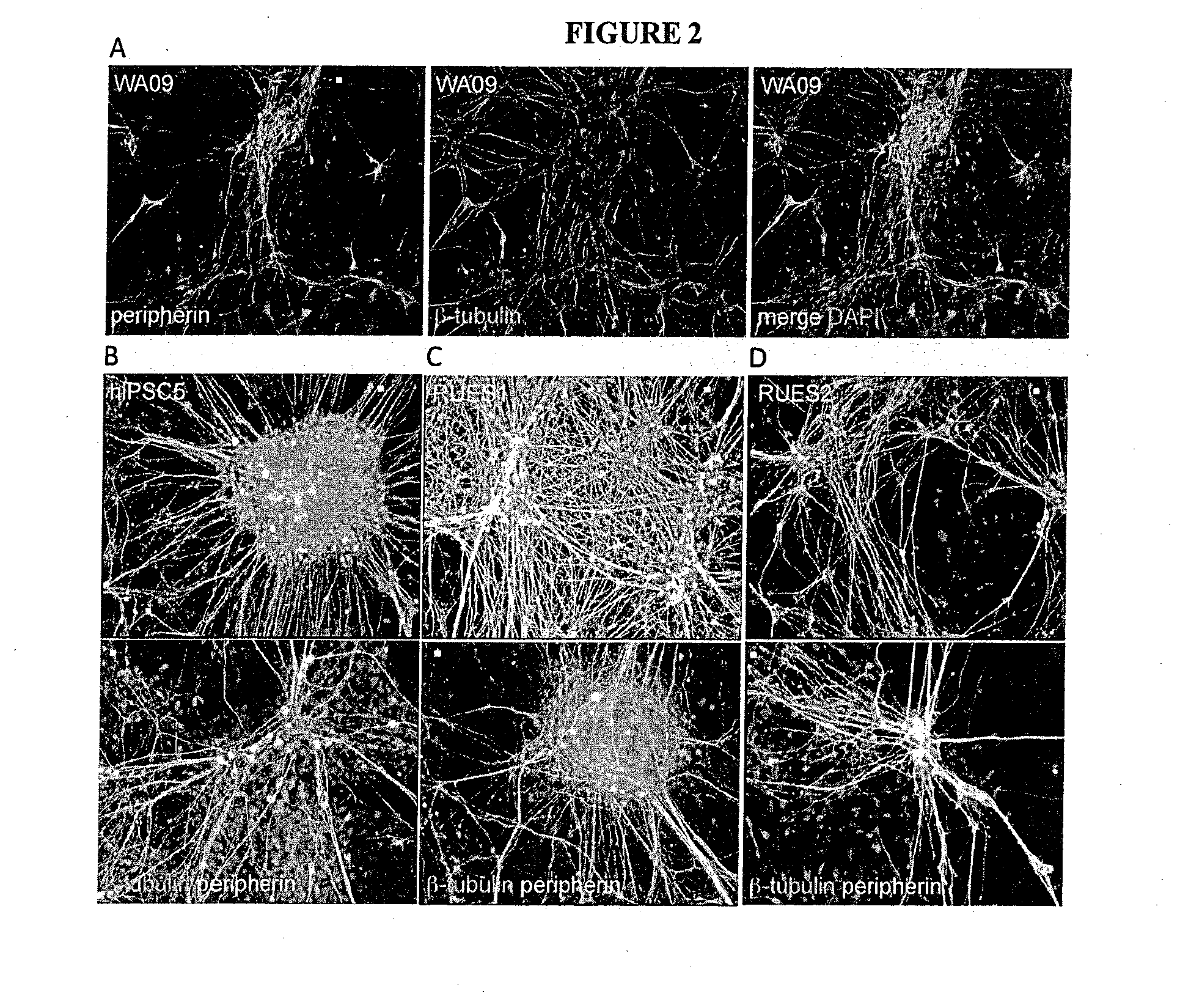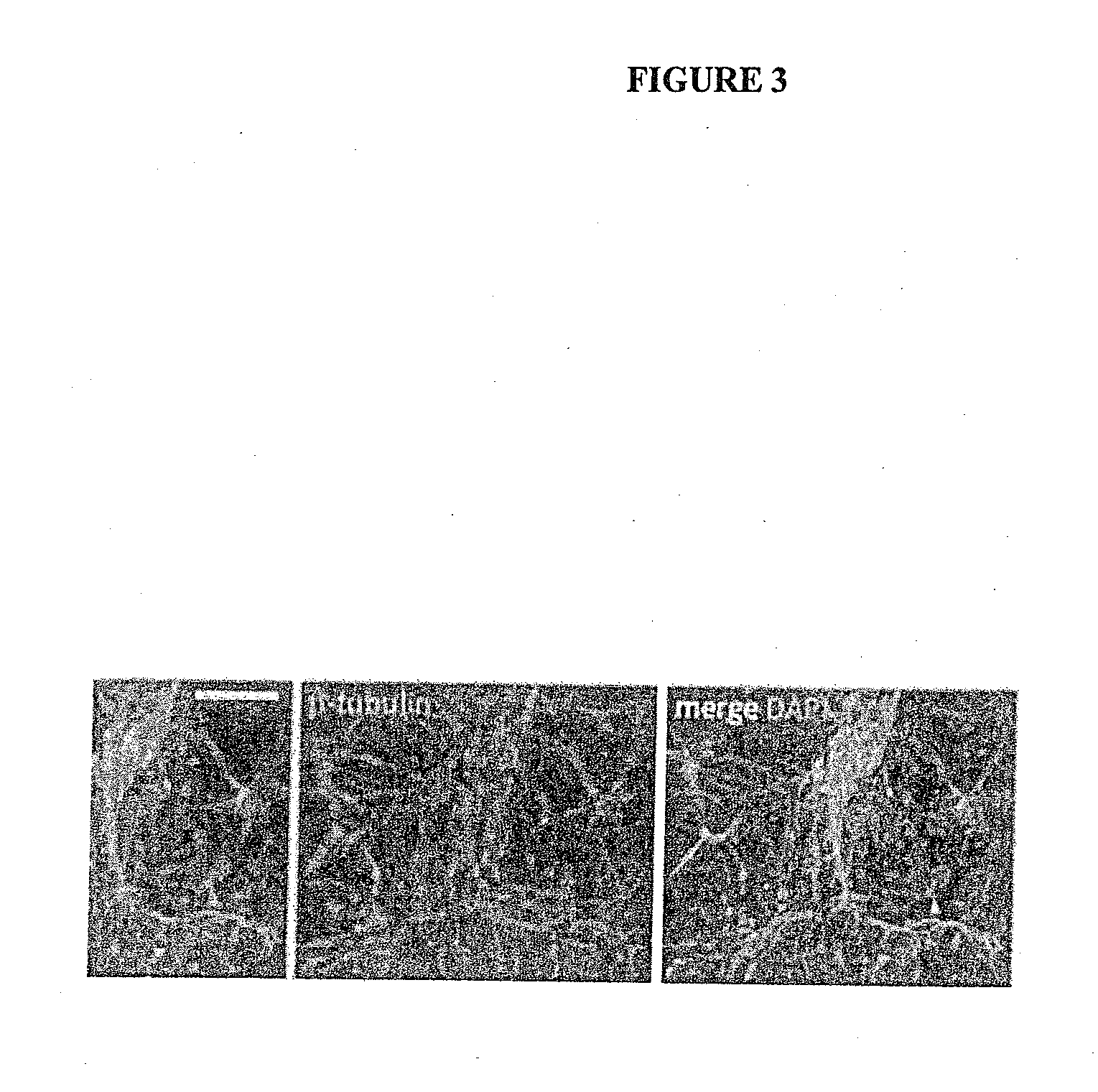Differentiation of human pluripotent stem cells to multipotent neural crest cells
- Summary
- Abstract
- Description
- Claims
- Application Information
AI Technical Summary
Benefits of technology
Problems solved by technology
Method used
Image
Examples
examples
Materials and Methods
Stem Cell Culture.
[0080]WA09 (WiCell), RUES1, RUES2 (Dr. A. Brivanlou, Rockefeller University) hESCs and the hiPSC lines Fib2-iPS4 and Fib2-iPS5 (Dr. George Daley, Children's Hospital Boston) were cultured on Geltrex (Invitrogen)-coated plates in chemically defined media containing Heregulin 13 (10 ng / ml), Activin A (10 ng / ml), LR-Igf (200 ng / ml) and Fgf2 (8 ng / ml) as described previously (25).
Neuroprogenitor Cell, Neural Crest and Mesenchymal Cell Differentiation.
[0081]NPC differentiation was performed as described (18). Briefly, cells were plated on Geltrex-coated plates in defined media without Activin A, supplemented with 20 μM SB 431542 (Tocris) and 500 ng / ml Noggin (R&D systems) for 11 days with or without 2 μM of (2′Z,3′E)-6-Bromoindirubin-3′-oxime (BIO) (GSK3 Inhibitor IX, Calbiochem), or 15 ng / ml Dickkopf (R&D Systems). For direct neural crest differentiation, cells were plated at a density of 1×105 cells / cm2 in defined media lacking Activin A, suppleme...
PUM
 Login to View More
Login to View More Abstract
Description
Claims
Application Information
 Login to View More
Login to View More - R&D
- Intellectual Property
- Life Sciences
- Materials
- Tech Scout
- Unparalleled Data Quality
- Higher Quality Content
- 60% Fewer Hallucinations
Browse by: Latest US Patents, China's latest patents, Technical Efficacy Thesaurus, Application Domain, Technology Topic, Popular Technical Reports.
© 2025 PatSnap. All rights reserved.Legal|Privacy policy|Modern Slavery Act Transparency Statement|Sitemap|About US| Contact US: help@patsnap.com



